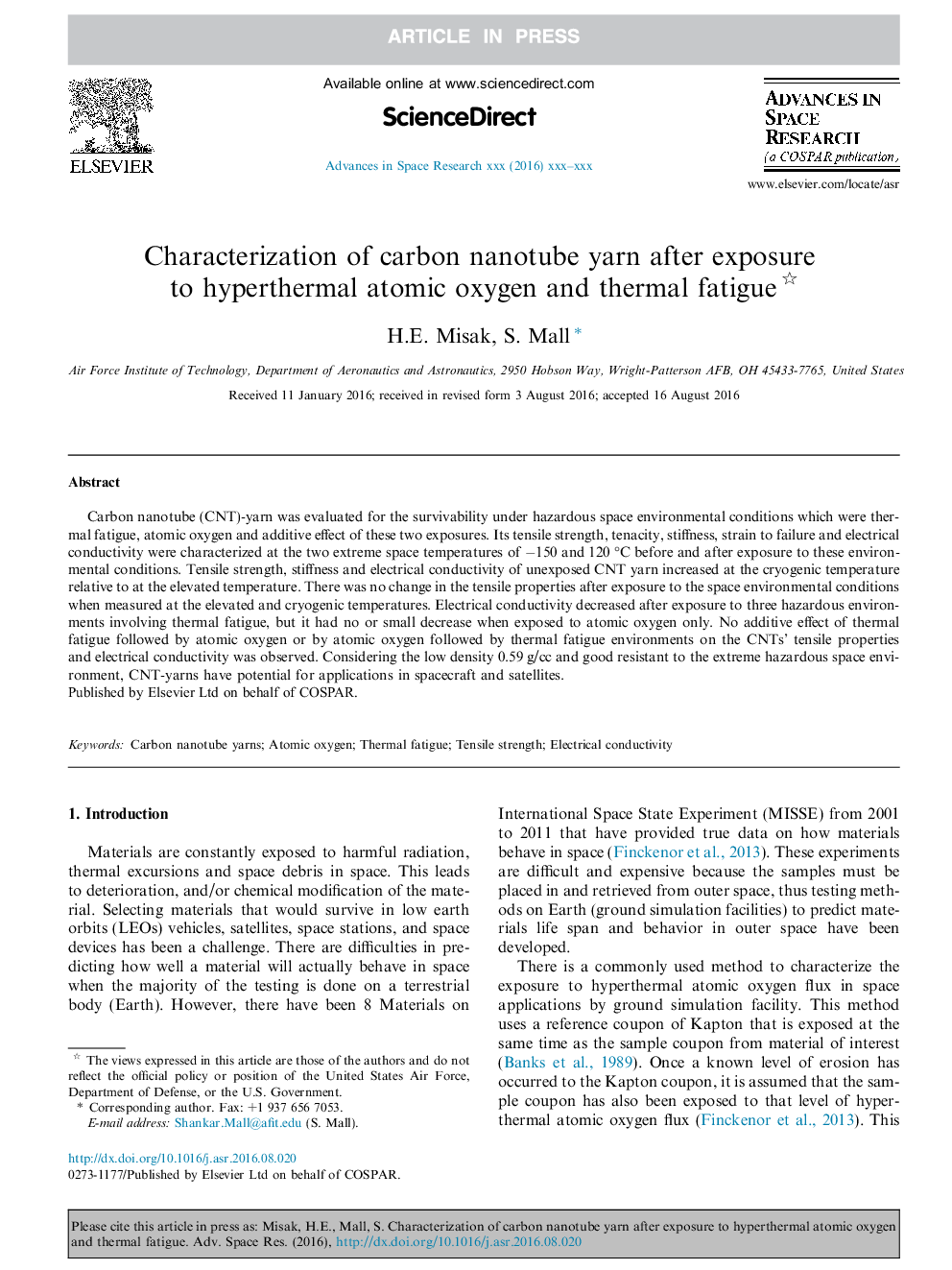| Article ID | Journal | Published Year | Pages | File Type |
|---|---|---|---|---|
| 5486812 | Advances in Space Research | 2016 | 8 Pages |
Abstract
Carbon nanotube (CNT)-yarn was evaluated for the survivability under hazardous space environmental conditions which were thermal fatigue, atomic oxygen and additive effect of these two exposures. Its tensile strength, tenacity, stiffness, strain to failure and electrical conductivity were characterized at the two extreme space temperatures of â150 and 120 °C before and after exposure to these environmental conditions. Tensile strength, stiffness and electrical conductivity of unexposed CNT yarn increased at the cryogenic temperature relative to at the elevated temperature. There was no change in the tensile properties after exposure to the space environmental conditions when measured at the elevated and cryogenic temperatures. Electrical conductivity decreased after exposure to three hazardous environments involving thermal fatigue, but it had no or small decrease when exposed to atomic oxygen only. No additive effect of thermal fatigue followed by atomic oxygen or by atomic oxygen followed by thermal fatigue environments on the CNTs' tensile properties and electrical conductivity was observed. Considering the low density 0.59 g/cc and good resistant to the extreme hazardous space environment, CNT-yarns have potential for applications in spacecraft and satellites.
Related Topics
Physical Sciences and Engineering
Earth and Planetary Sciences
Space and Planetary Science
Authors
H.E. Misak, S. Mall,
